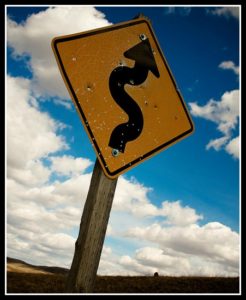 A while back, I took an online course on fiction writing. When the classes started, I found myself a bit disappointed—it seemed that we’d be learning a lot of what I already knew, and I wasn’t so sure that every good story had to follow three-act story structure. I stuck it out anyway, and by the course’s end, I was so glad that I did. I still don’t insist that you can’t write a good story without three-act structure (plenty of writers do), but the class made me see how it can make the actual writing part so much easier—kind of like having direction toward your destination. So what is three-act story structure? Here’s a basic overview of what the course taught me:
A while back, I took an online course on fiction writing. When the classes started, I found myself a bit disappointed—it seemed that we’d be learning a lot of what I already knew, and I wasn’t so sure that every good story had to follow three-act story structure. I stuck it out anyway, and by the course’s end, I was so glad that I did. I still don’t insist that you can’t write a good story without three-act structure (plenty of writers do), but the class made me see how it can make the actual writing part so much easier—kind of like having direction toward your destination. So what is three-act story structure? Here’s a basic overview of what the course taught me:
ACT 1
- HOOK. The hook opens the story with a life-changing occurrence in the life of the protagonist (the main character). This event brings about a journey in his or her life (physically, emotionally, or both), with that journey being the story you write.
- BACKSTORY. In the backstory, the other important characters are introduced and their histories (as well as the protagonist’s history) are explained at least in part. Backstory also introduces your protagonist’s flaw. Flaws can be many things; for example, lack of self-confidence, inability to trust, materialism, or selfishness, to name just a few. Your protagonist’s flaw is what he or she needs to overcome by the end of the story.
- TRIGGER. The trigger occurs as the very last scene in Act 1, sending your protagonist into a crisis. It is brought about either by a strong physical or emotional event, often at the hands of the antagonist (the force working against the protagonist: a person, a community, or even an event like a hurricane).
ACT 2 (Even though this is a new act, note that the crisis often follows the trigger in the same scene)
- CRISIS. The crisis is the protagonist’s reaction to the trigger. Although it is an emotional reaction, it may be shown emotionally (through description of the inner reaction), physically (as a outward reaction), or as a combination of both of these.
- STRUGGLE. In the struggle, the antagonist hits the protagonist over and over with difficulties (physical, emotional, or both). With each obstacle, the stakes against the protagonist are upped a little bit more, working toward both the climax and the ending of the story.
- EPIPHANY. The epiphany is the protagonist’s resolving of the emotional part of the story. He or she realizes his or her flaw and determines what needs to be done to overcome it. This realization propels the story into Act 3.
ACT 3
- PLAN. With the protagonist’s knowledge born of the epiphany, the plan emerges. He or she decides to take on the outer conflict (the inner conflict was resolved with the epiphany) of the story by taking aim at the antagonist.
- CLIMAX. The climax is where the protagonist finally battles it out with the antagonist and wins. It is the highest point of the story, and there should be a sense of relief afterward—not only for the antagonist, but also for the reader.
- ENDING. In the ending, your story should come full circle. All the loose ends are tied up (unless your book is part of a series and this book is transitioning into the next one, then a few questions could remain) and, in most cases, the reader gets that “happily ever after” feeling.
That said, most of my classmates were creating their stories using this outline. On the other hand, my novel was mostly written, so I had to go back through it and pick out each point of the acts (not as easy as one would think). I finally finished mapping out my three-act structure, and it truly did help me better develop certain parts of the story. I plan to use it with future novels as well, although we’ll see how that goes. I’ve always been a write-by-the-seat-of-your-pants girl, and there have been many times when I’ve started a scene without knowing how it would end until I finished it—and I love being amazed by how everything comes together perfectly in the end. But having a guide certainly can’t hurt.
So what do you think? Do you use the three-act story structure when writing fiction? If you don’t, do you think you might consider doing so now that you’ve seen it explained?
photo credit: Nomadic Lass via photopin cc

Recent Comments